5 Extravagant Buildings That Showcase the Drama of Byzantine Architecture

Left to right: Hagia Sophia, Hagia Sophia interior, St. Mark's Basilica, St. Mark's Basilica Interior, Basilica of Sant’apollinare Nuovo Interior, Hosios Loukas, Hosios Loukas Details, Basilica Cistern
Known for its extravagance, Byzantine architecture is defined by the best structural advancements of the age and multiple religious influences. Like Byzantine art, Byzantine architecture was highly influenced by Orthodox Christianity and sought to honor God by creating incredible works.
Much of Byzantine architecture was commissioned by the famous Roman Emperor Justinian. Under his rule, architecture was defined by beautiful interior mosaics and domes higher than their predecessors—the result of an advanced understanding of structure. The structure was often aided by some of the most beautiful elements of many styles including Greek, Roman, and Near East architecture.
Istanbul’s Hagia Sophia is the best-known example of the style and clearly depicts the structural advancements, but there are plenty of other examples that showcase the drama of Byzantine architecture.
In this article, we break down the characteristics of Byzantine architecture and some of the best examples of the style.
Characteristics of Byzantine Architecture
Byzantine architecture is known for its impressive ornamentation including stonework and mosaics that adorn impressive structural members. Here are some of the most common characteristics of the style.
High Domes

Hagia Sophia in Istanbul, Turkey (Photo: Stock Photos from Repina Valeriya/Shutterstock)
The elevated dome is the most recognizable feature of Byzantine architecture. This characteristic is the perfect example of how advanced structural knowledge influenced the style.
Mosaics
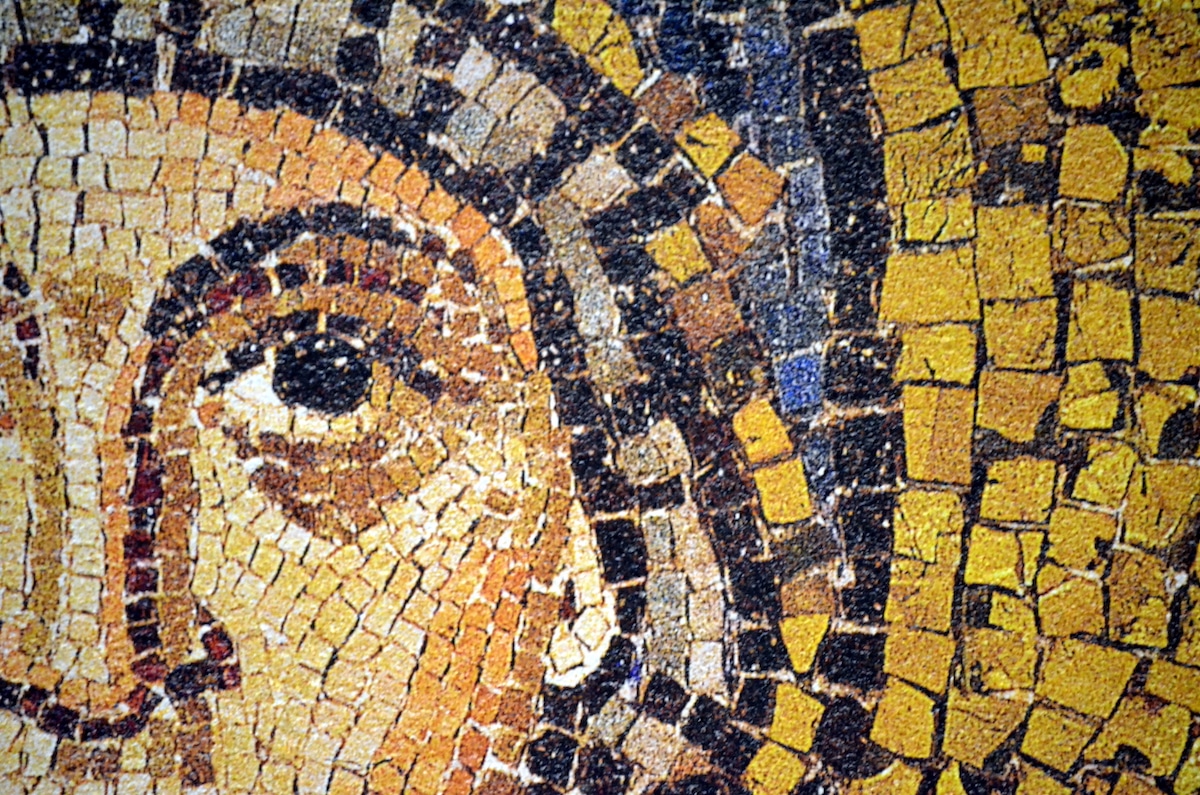
Byzantine Mosaic in Ravenna, Italy (Photo: Stock Photos from Inguaribile Vlaggiatore/Shutterstock)
Another clear characteristic of Byzantine architecture is the use of colorful and intricate mosaics. The mosaics most often feature religious stories and events surrounded by smaller pattern work.
Greek Floor Plan
Since Orthodox Christianity influenced Byzantine architecture, the floor plans of this style are often designed in the form of a Greek cross. This differs from other places of worship which were cruciform but not as symmetrical.
Examples of Byzantine Architecture
Hagia Sophia
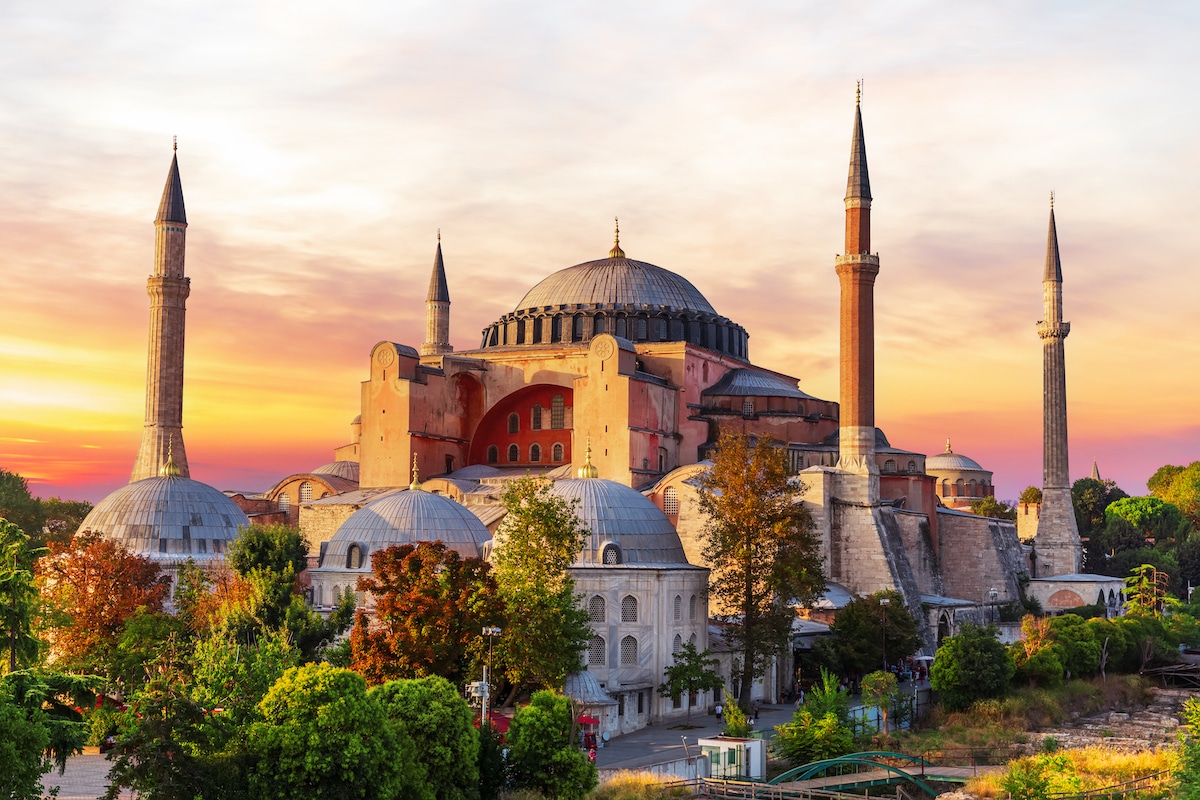
Hagia Sophia in Istanbul, Turkey (Photo: Stock Photos from AlexAnton/Shutterstock)
The most famous example of Byzantine architecture is by far the Hagia Sophia. This building embodies the intricate detailing and drama of the architectural style. Aside from its importance as a stunning building, the Hagia Sophia has held cultural significance in Istanbul for its 1,500 year-long life.
The Hagia Sophia’s dome is clearly heightened with a stunning result on both the interior and exterior. The interior is also famous for the gold detailing throughout the interior and in the domes. While the Hagia Sophia is currently used as a mosque, it has previously served as a church and public museum.
For more information about this famous building, check out our article on the history and importance of the Hagia Sophia.
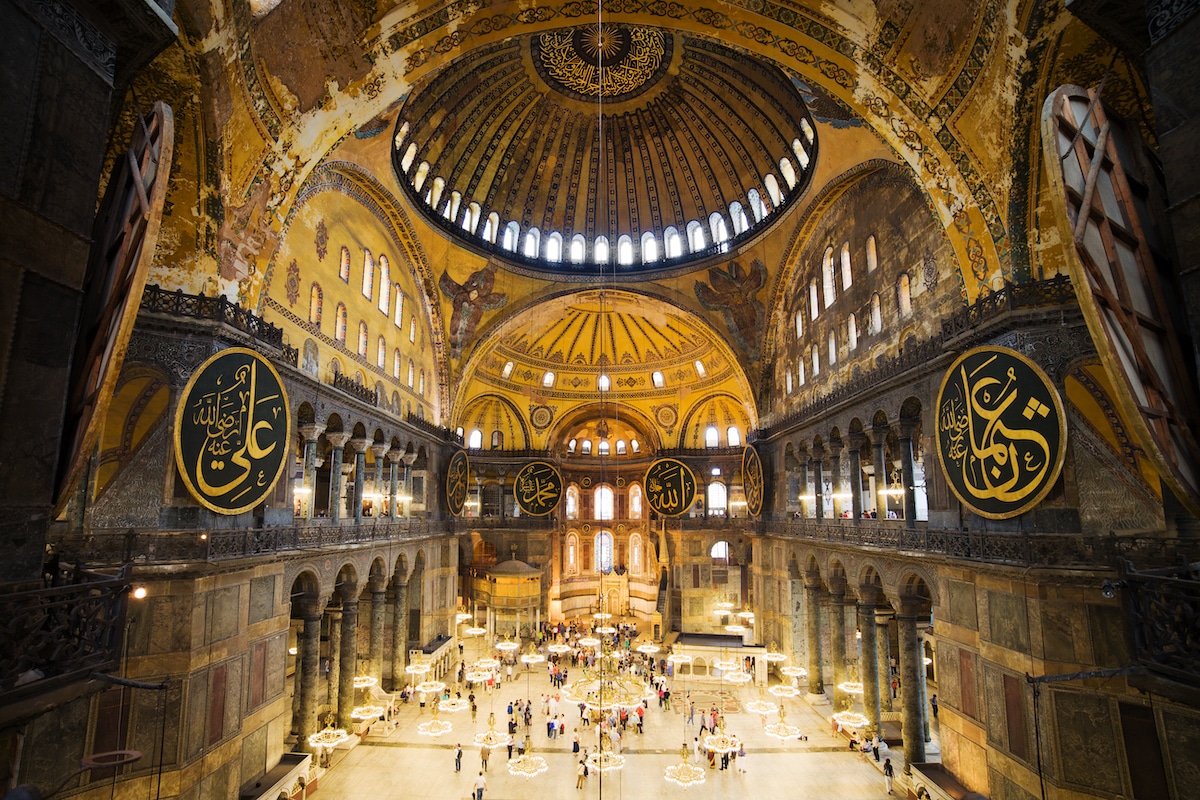
Hagia Sophia in Istanbul, Turkey (Photo: Stock Photos from Artur Bogacki/Shutterstock)
St. Mark's Basilica
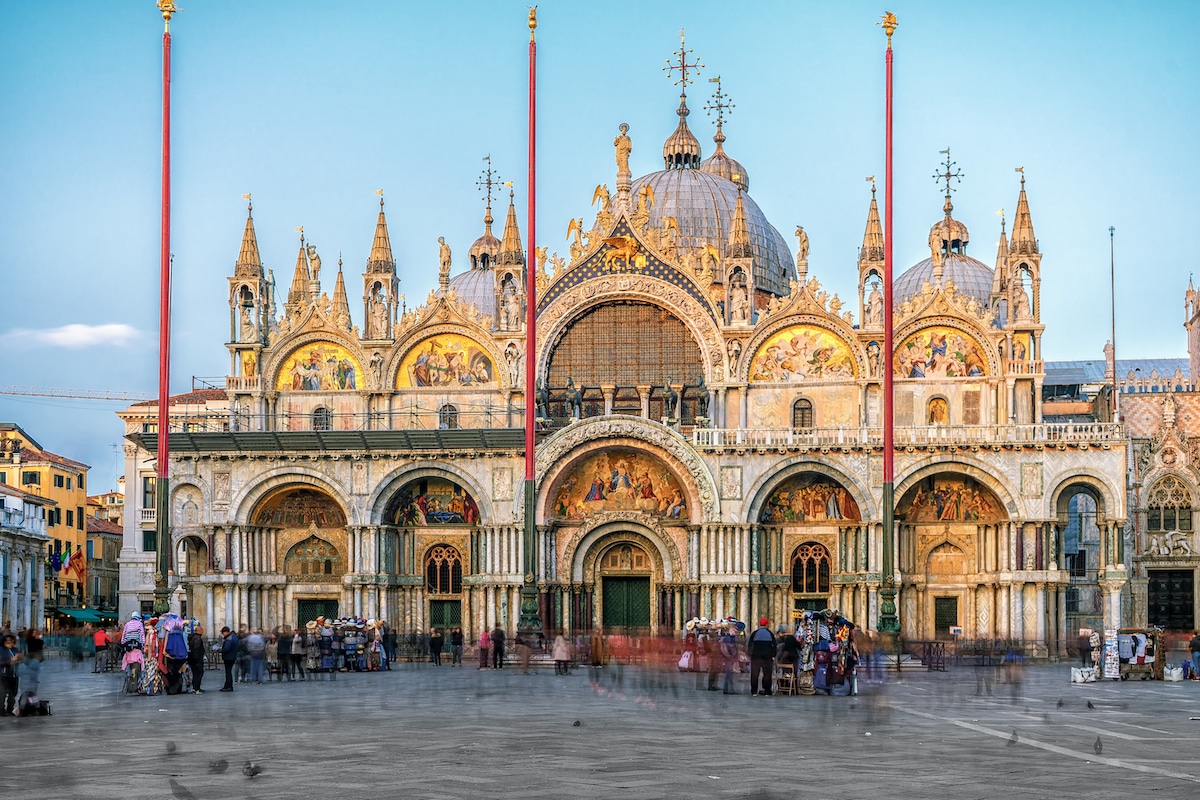
St. Mark’s Basilica in Venice, Italy (Photo: Stock Photos from DILOCOM/Shutterstock)
St. Mark’s Basilica, or the Patriarchal Cathedral Basilica of St. Mark’s Basilica, is a unique piece of Byzantine architecture. It is an example of Italo-Byzantine design—an Italian interpretation of the architectural aesthetic. Located near Piazza San Marco, the cathedral is highly influenced by the Hagia Sophia. Some artifacts in the church actually came directly from the Hagia Sophia after the Fourth Crusade.
The interior of the church has fantastic ornamentation; it has been known as Chiesa d’Oro, or Church of Gold since the 11th century. Though much of this drama comes from Byzantine influences, it also demonstrates many qualities of Gothic and Renaissance architecture.
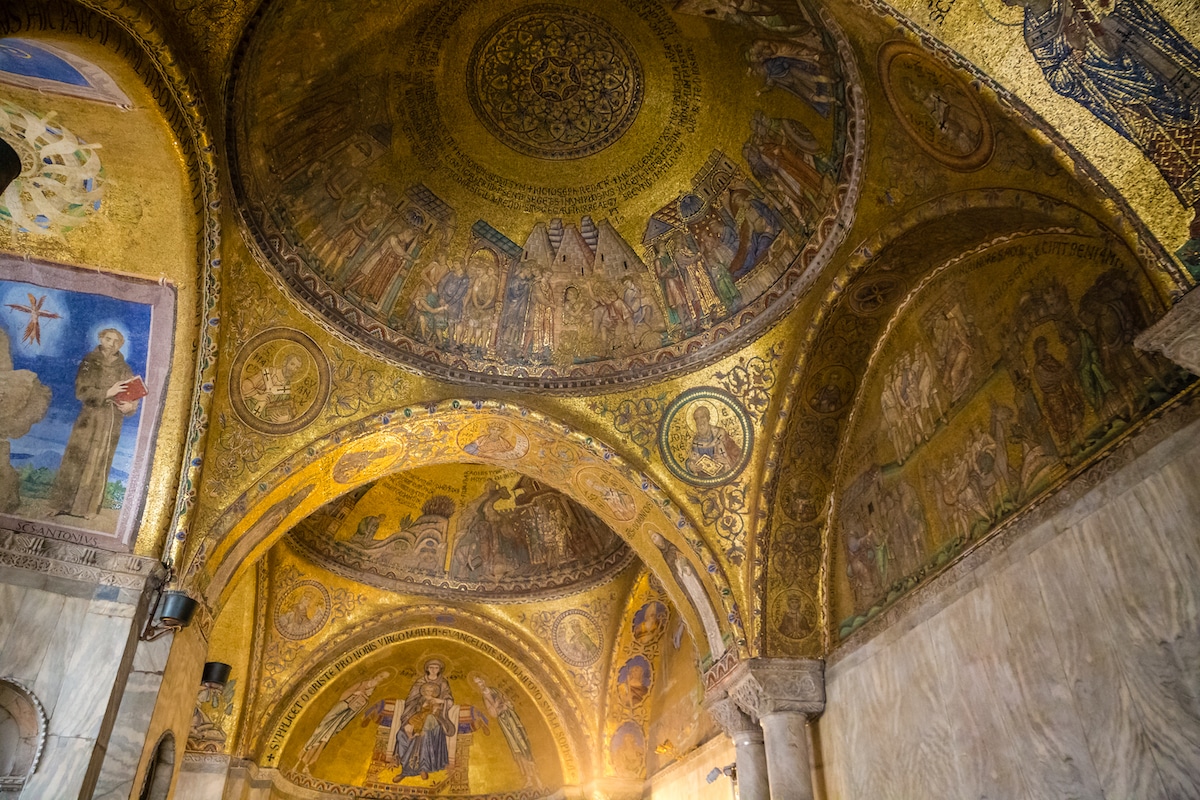
St. Mark’s Basilica in Venice, Italy (Photo: Stock Photos from Zdenek Matyas Photography/Shutterstock)
Basilica of Sant’apollinare Nuovo
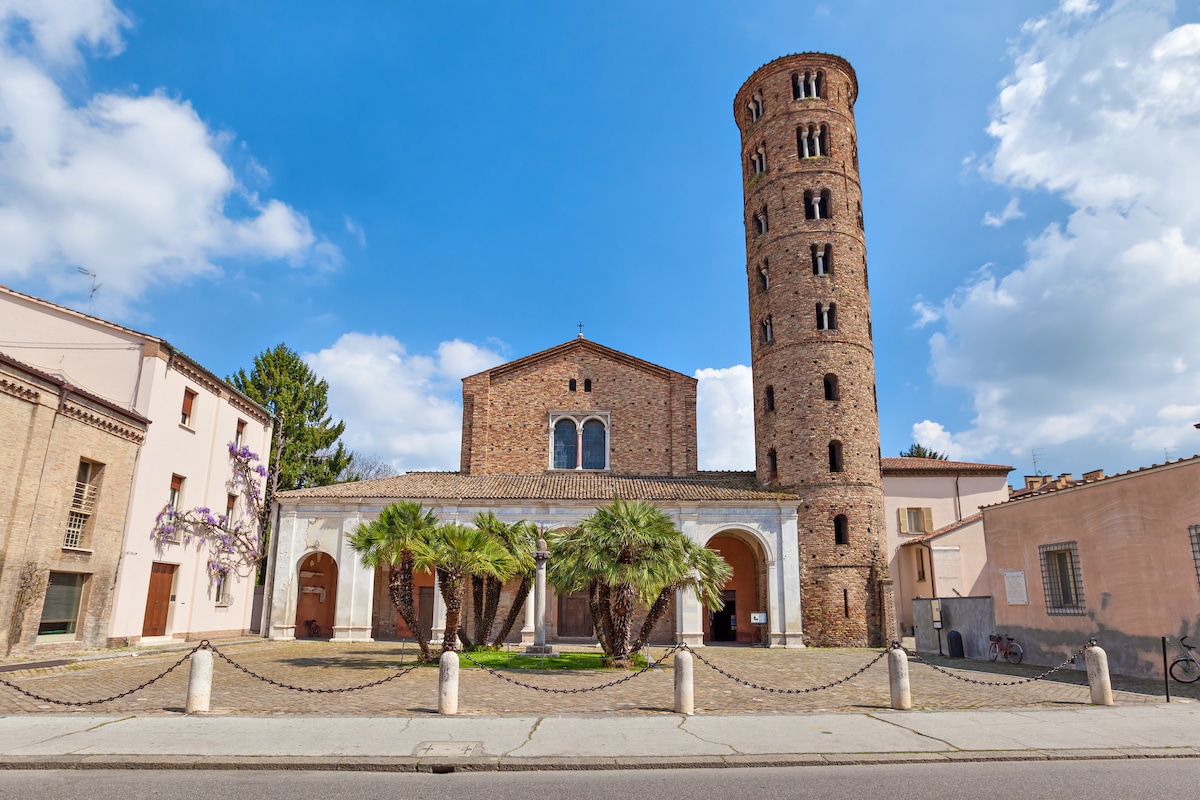
Basilica of Sant’apollinare Nuovo in Ravenna, Emilia-Romagna, Italy (Photo: Stock Photos from Sergey Dzyuba/Shutterstock)
The Basilica of Sant’Apollinare Nuovo is an important Byzantine church in Ravenna, Italy. It was built as Theodoric the Great’s chapel. In 561 AD Emporer Junstinian I changed the name to Sanctus Martinus in Coelo Aureo. At this point, the iconic mosaics were covered up because Pope Gregory the Great believed they were distracting from the worship of God. Still, the church includes examples of many art styles that reflect its long and complicated history.
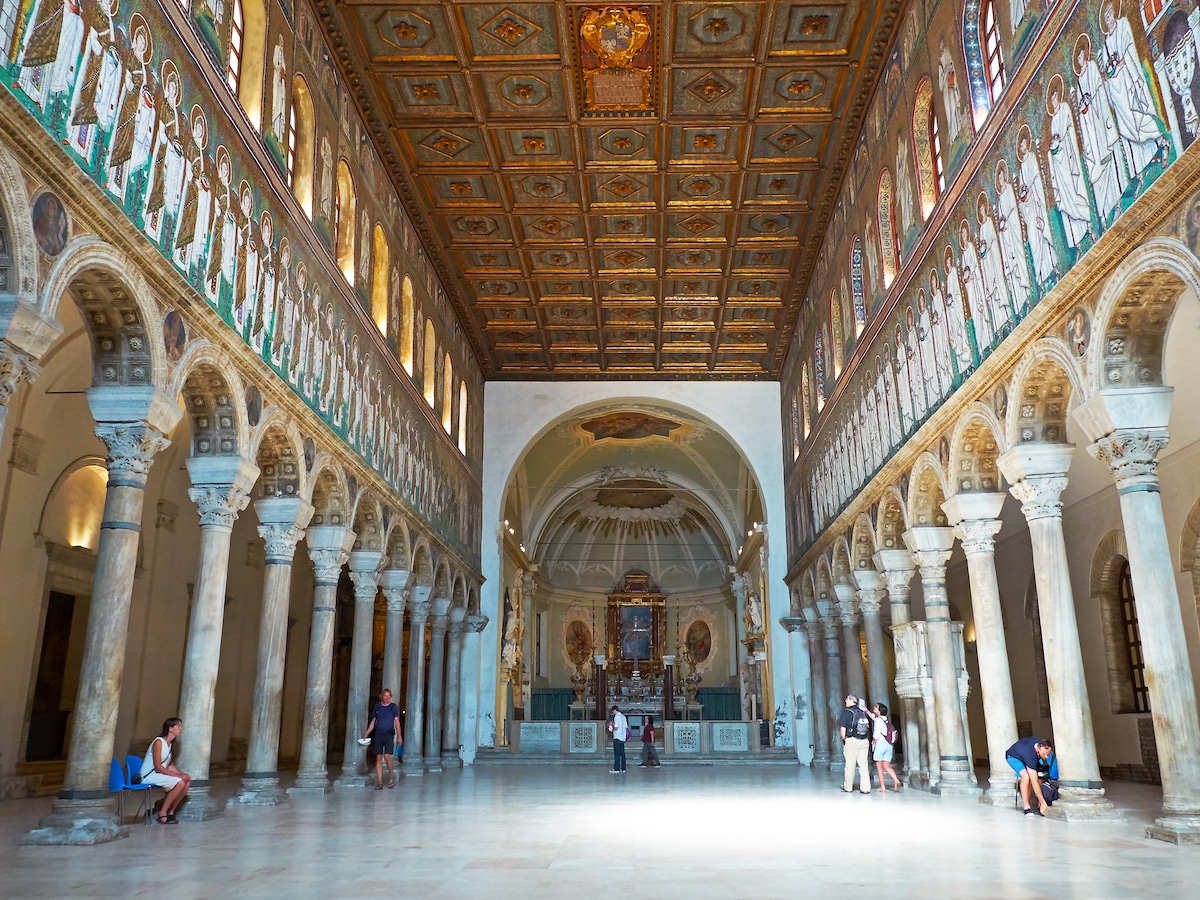
Basilica of Sant’apollinare Nuovo in Ravenna, Emilia-Romagna, Italy (Photo: Stock Photos from Alvaro German Vilela/Shutterstock)
Hosios Loukas
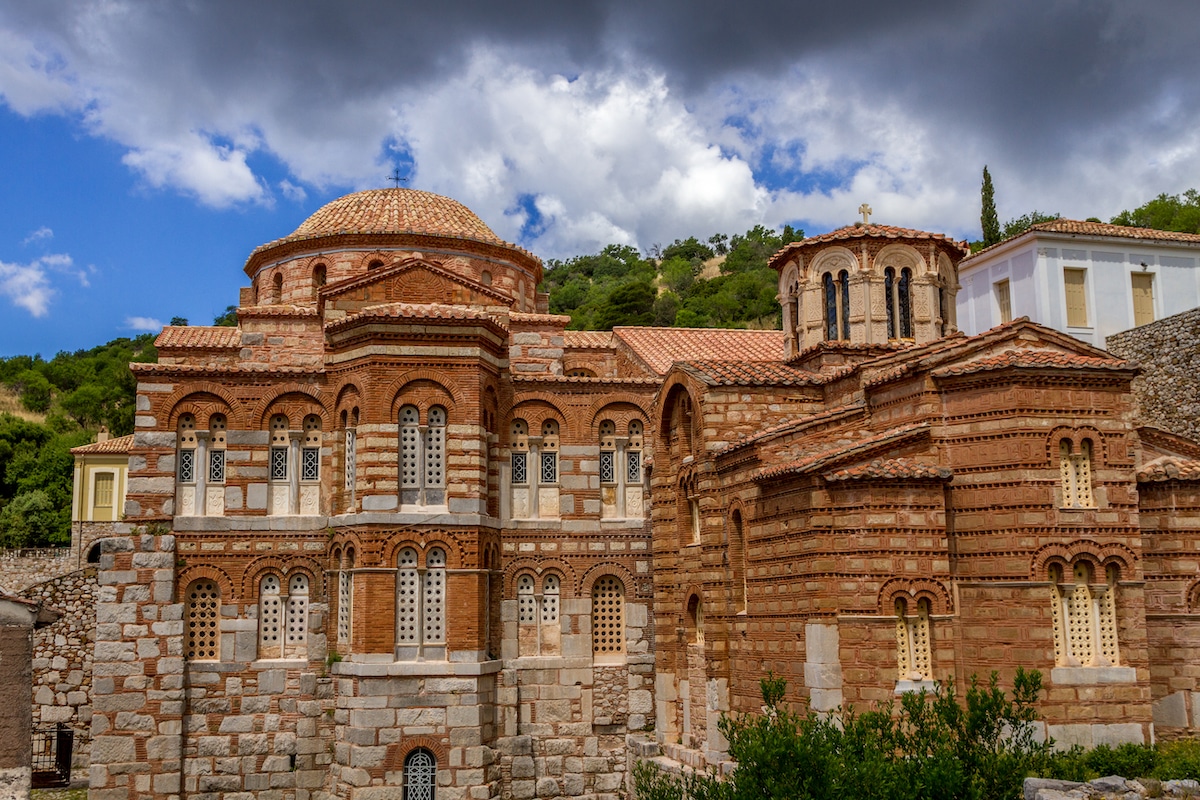
Hosios Loukas in Distomo, Greece (Photo: Stock Photos from yiannisscheidt/Shutterstock)
Built on Mount Helicon in Greece, the monastery of Hosios Loukas is one of the most important buildings of the middle Byzantine age. It is closely related to two other monasteries—Daphni and Nea Moni of Chios—as all three exemplify this age of Byzantine architecture.
The Hosios Loukas Church was built in the 10th century and is dedicated to Saint Luke, a military saint whose remains are said to be preserved in the monastery. Hosios Loukas is connected to a larger church of Katholikon which is the earliest existing domed octagon church. One of the most impressive features of the church is the colorful interior mosaics.
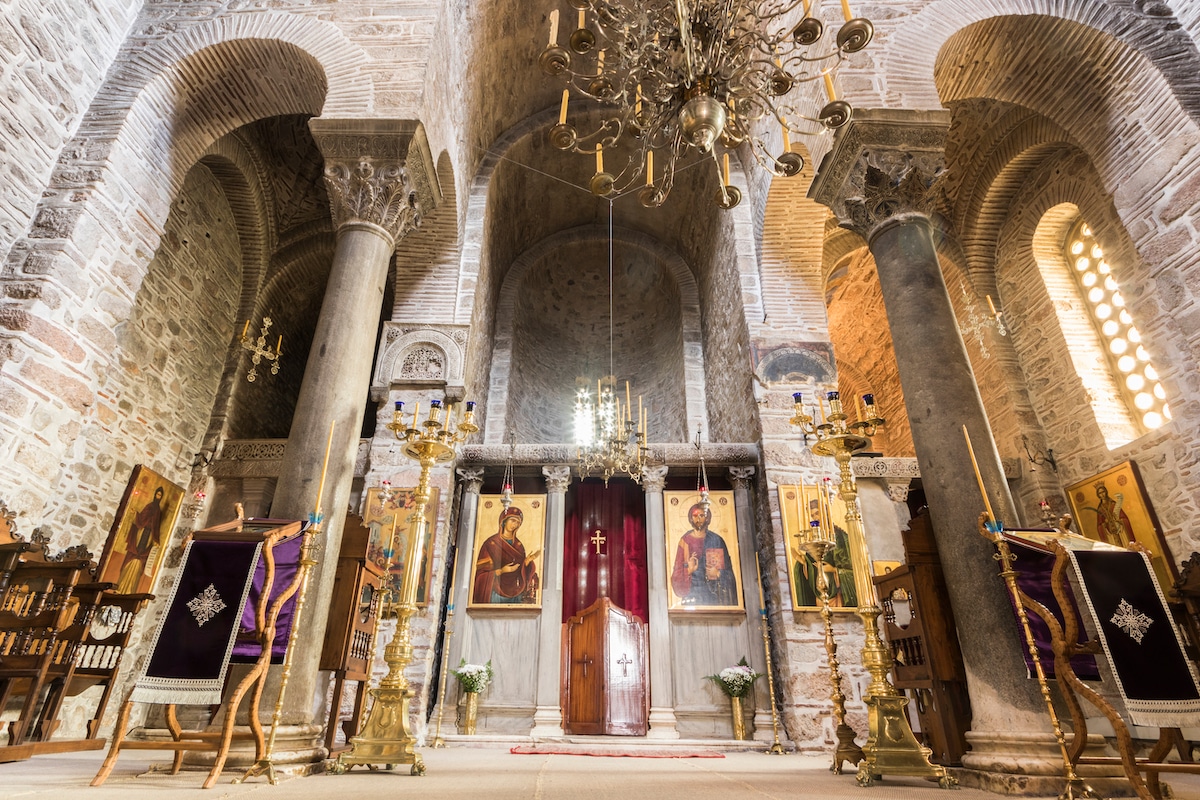
Hosios Loukas in Distomo, Greece (Photo: Stock Photos from Joaquin Ossorio Castillo/Shutterstock)
Basilica Cistern
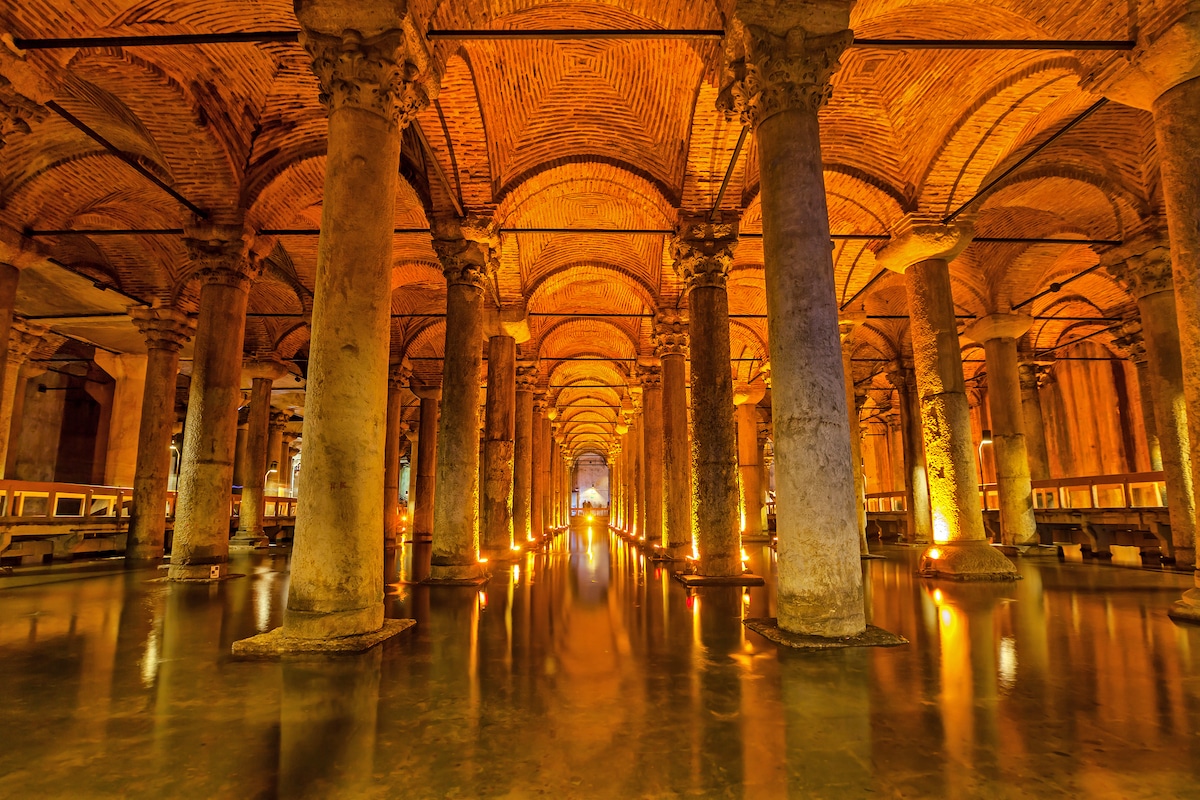
Basilica Cistern in Istanbul, Turkey (Photo: Stock Photos from Sergey Dzyuba/Shutterstock)
This example of Byzantine architecture is certainly a bit different than the ornate gold detailing found in Hagia Sophia. The Basilica Cistern is a large cistern under Istanbul. Like many other Byzantine works, it was constructed during the reign of Justinian I. The cistern acted as a water filtration system for the Great Palace of Constantinople and looked outwards towards Hagia Sophia.
Though as a cistern it was frequently filled with water, it is now typically left empty in order to allow entry to tourists. An iconic design feature in the Basilica Cistern is the column bases featuring the form of Medusa. Some accounts say that Medusa’s face is sideways in order to prohibit her from turning man to stone, while others say it is simply more surface area needed for an efficient column. Either way, the functional sculpture certainly adds some signature drama to this Byzantine work.
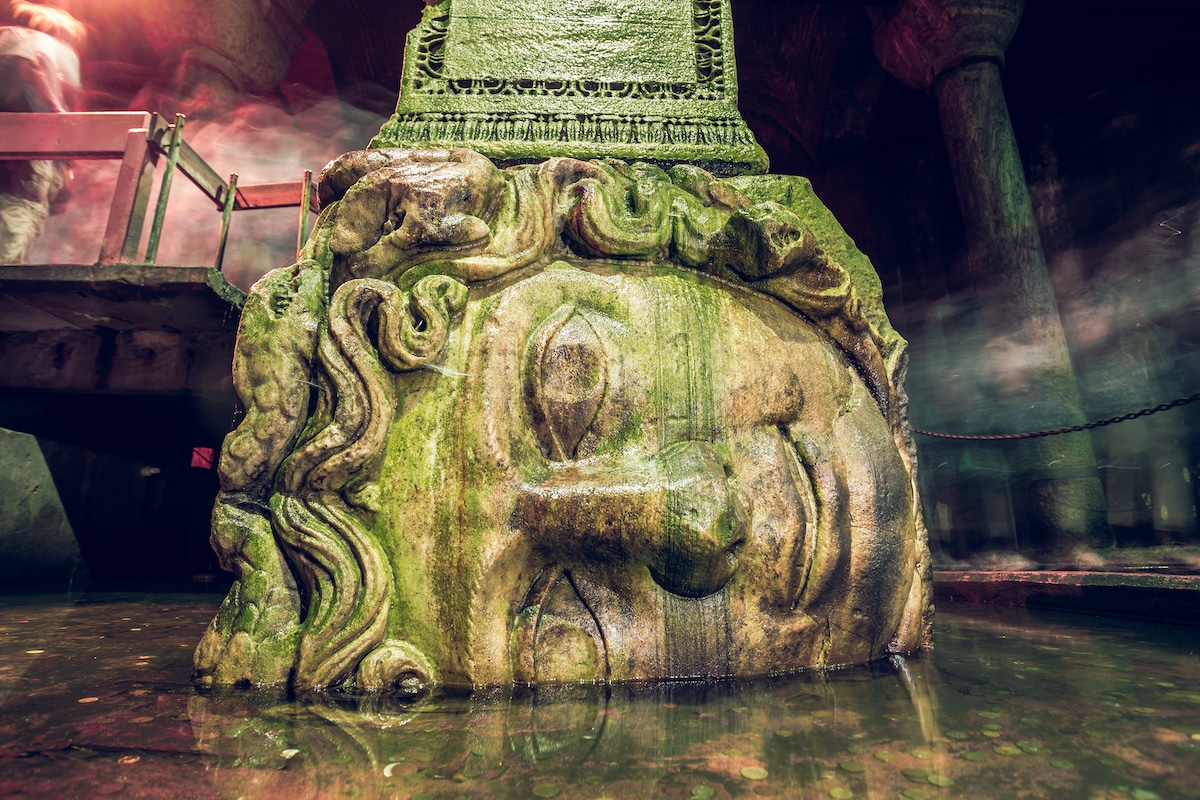
Basilica Cistern in Istanbul, Turkey (Photo: Stock Photos from Volodymyr Goinyk/Shutterstock)
Related Articles:
5 Art Nouveau Buildings That Embody the Elegance of This Architectural Style
5 Postmodernist Buildings That Capture the Movement’s Playful Side
5 Art Deco Buildings That Embody the Vintage Glamour of This Architectural Style
5 Baroque-Style Buildings That Celebrate the Extravagance of the Architectural Movement
5 Awe-Inspiring Gothic Cathedrals That Celebrate the Flamboyant Architectural Style
READ: 5 Extravagant Buildings That Showcase the Drama of Byzantine Architecture

0 Commentaires